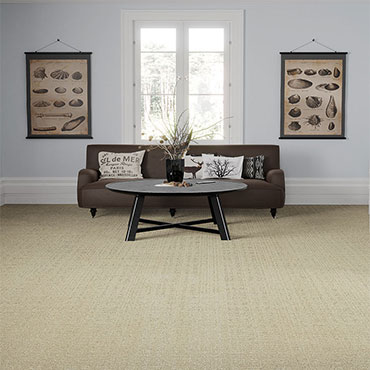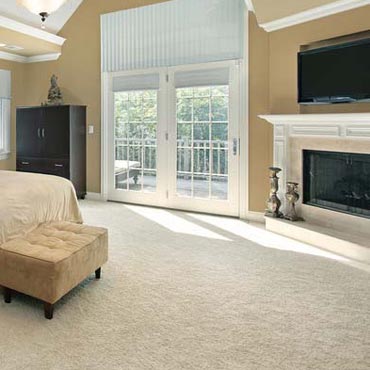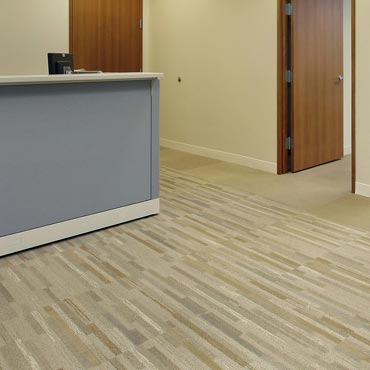We craft products designed with the ideals of our customers in mind and then match them to their perfect home. We sell craftsmanship and timeless design principles. We sell simplicity and quality, purpose, refinement and comfort. We sell natural beauty that doesn’t fade. Learn More
Patterned Carpet
Patterned Carpet Guide

The Rising Star of Modern Design: Patterned Commercial Carpet
In the realm of modern interior design and architecture, patterned commercial carpeting has emerged as a key player, revolutionizing how professionals approach the aesthetics and functionality of commercial spaces. Its versatility, durability, sustainability, and aesthetic appeal make it an ideal choice for architects, interior designers, specifiers, and commercial buyers. This article delves into the significance of patterned commercial carpeting, offering insights and tips for selecting the perfect product for various projects.
Versatility in Design
Patterned commercial carpet offers unmatched versatility, making it a popular choice among designers. Its range of patterns, colors, and textures opens up endless possibilities for customization. This versatility allows designers to create unique, brand-aligned environments in commercial settings, whether it's a corporate office, a retail space, or a luxury hotel.
Designers can choose from geometric patterns, abstract designs, organic shapes, or thematic motifs, depending on the project's tone and atmosphere. For instance, a bold, vibrant pattern can energize a retail space, while a subtle, textured pattern can imbue a corporate office with a sense of sophistication and professionalism.
Durability That Lasts
Commercial environments demand flooring solutions that can withstand heavy foot traffic and everyday wear and tear. Patterned commercial carpets are designed with durability in mind. They often feature high-quality fibers and robust backing materials, ensuring longevity and maintaining appearance over time.
When selecting a carpet, it's crucial to consider the space's traffic levels. Nylon and polypropylene are popular choices for high-traffic areas due to their resilience and ease of maintenance. Moreover, patterned designs can cleverly conceal stains and wear, making them practical for busy environments.
Embracing Sustainability
Sustainability is a growing concern in all aspects of design and construction. Many manufacturers now produce patterned commercial carpets using eco-friendly materials and processes. Recycled materials, low-VOC (Volatile Organic Compounds) emissions, and energy-efficient manufacturing are becoming standard practices in the industry.
Designers and buyers committed to green building standards should look for carpets with environmental certifications, such as Green Label Plus or Cradle to Cradle. These products not only contribute to a healthier indoor environment but also align with broader environmental goals.
Enhancing Commercial Spaces
The aesthetic impact of patterned commercial carpet is undeniable. It can define zones within an open-plan space, add warmth and texture, and contribute to the overall mood and atmosphere. For businesses, the carpet can be a part of their branding, with colors and patterns that reflect their corporate identity.
Acoustics is another crucial consideration in commercial spaces. Patterned carpets are excellent at absorbing sound, reducing echo, and creating a more comfortable and productive environment, especially in spaces like offices and libraries .
Trends and Innovations
The industry is witnessing exciting trends and innovations. Digital printing technology has opened up new possibilities for customization, allowing for intricate designs and a broader color palette. There's a growing trend towards biophilic design, where patterns inspired by nature create a sense of connection to the natural world, promoting wellbeing.
In terms of materials, there's a move towards innovative fibers that offer enhanced performance and sustainability. For example, P.E.T. polyester, made from recycled plastic bottles, is gaining popularity for its environmental credentials and durability.
Tips for Selection
For professionals selecting patterned commercial carpet, consider the following:
- Understand the Space’s Function: The carpet should suit the function of the space. High-traffic areas require more durable materials, while luxury spaces may call for plush, sophisticated designs.
- Consider Maintenance Requirements: Opt for patterns and colors that can hide stains and are easy to clean.
- Balance Aesthetics and Practicality: While the design is crucial, it should not compromise functionality. Consider factors like slip resistance and ease of movement.
- Align with Overall Design Vision: Ensure the carpet complements other design elements in the space, such as furniture and wall colors.
- Stay Informed About Trends: Keeping abreast of the latest trends and materials can inspire innovative design solutions.
Conclusion
Patterned commercial carpeting is more than just a flooring option; it's a design tool that can transform commercial spaces. Its versatility, durability, sustainability, and aesthetic appeal make it an invaluable component in modern interior design and architecture. By carefully selecting and integrating patterned carpets into their projects, professionals can create spaces that are not only visually striking but also functional and sustainable , reflecting the evolving dynamics of the industry.
Disclaimer: The information provided in this article is for general informational purposes only. While we strive to ensure the accuracy and reliability of the information presented, we make no warranties, express or implied, about the completeness, accuracy, reliability, suitability, or availability with respect to the content. Any reliance you place on such information is strictly at your own risk. We recommend consulting with professionals for specific advice tailored to your project’s needs, particularly regarding building codes, regulations, and product specifications.
Under no circumstances shall we be liable for any loss or damage, including without limitation, indirect or consequential loss or damage, arising from the use of, or reliance on, the information provided in this article.
Featured Brands
The Best 6 Patterned Carpet Brands

Anderson-Tuftex Carpet
Profile | WebsiteWe craft products designed with the ideals of our customers in mind and then match them to their perfect home. We sell craftsmanship and timeless design principles. We sell simplicity and quality, purpose, refinement and comfort. We sell natural beauty that doesn’t fade. Learn More

Couristan Carpet
Profile | Website | Video | Tips | What's New | Warranty | Maintain | BlogSince its establishment over nine decades ago, Couristan and its entire team has dedicated itself to a universal commitment of excellence. Weaving four key components into every product – Trust, Style, Quality and Innovation – Couristan has earned its place as one of the most highly regarded companies in the floor covering industry. This long-standing position of success is a direct result of providing customers with the highest levels of design, value and customer service. Learn More



Shaw Life Guard Carpet
Profile | WebsiteLife can be messy...especially for active households with kids & pets. LifeGuard carpet is worry proof and waterproof for a cleaner home. Learn More

Shelmarc Carpets
Profile | WebsiteIf you need your own customized product, Shelmarc offers custom services to meet your specific needs. We are able to custom make almost any type of carpet that you can envision. Learn More
Patterned Carpet News
Latest Patterned Carpet News
Patterned Carpet...Embracing Elegance and Comfort: The Allure of Patterned Carpet for Homeowners In the realm of home decor, the selection of floor covering plays a pivotal role in defining the ambiance and aesthetic appeal of a space. Among the myriad options, patterned carpet stands out as a choice that combines elegance, comfort, and a unique ability to transform a room. For consumers and home... |
Commercial Loop Pile (Pattern)...Navigating the World of Commercial Loop Pile Patterned Carpeting Introduction:In the realm of commercial interiors, the choice of flooring plays a pivotal role in both aesthetic appeal and practical functionality. Among the diverse options available, commercial loop pile patterned carpeting stands out for its unique blend of durability, style, and comfort. This a... |
Commercial Cut/Uncut (Pattern)...Commercial Cut/Uncut Patterned Carpeting: A Guide for Architects, Interior Designers, and Commercial Floor Covering Buyers In the realm of commercial interiors, the choice of flooring plays a pivotal role in defining the aesthetic and functional quality of a space. Among the myriad options available, commercial cut/uncut patterned carpeting stands out for its versatility, durab... |





